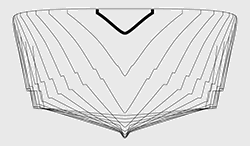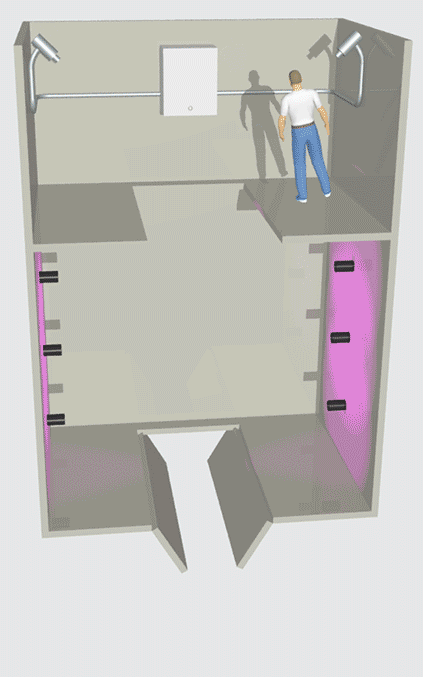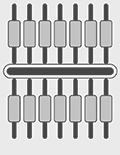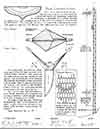Panel-Fabrication Concept
Panel-Fabrication Concept
This is a high-speed manufacturing technique proposed by Steve Hines in 1968 for making thin parts (airplane fuselages, car body panels, boat hulls, etc.) by spraying liquid epoxy resin and hardener together to intersect in the cross section of the part. The construction technique requires a virtually weightless environment.
|
 |
Conventional panel construction requires time to make the stamping dies, or molds to construct carbon-fiber shapes, or stamp sheet metal parts. needed for car bodies, or airplane fuselages.
Described is a weightless environment and panel-forming technique where the shape is formed at the intersection of sprayed liquid epoxy hardener and resin, which chemically react to solidify in the shape of the intersection. To accelerate the hardening process, ultraviolet lights are directed at both sides of the newly formed part as it falls.
It is important that the resin and hardner be sprayed in a smooth laminar flow (glassy sheets) from the flexible nozzles, rather than turbulent flow of droplets. Laminar flow is achieved by buffering any pulsing in the pressure of the liquids from the pumping equipment. An electrical anology would be rectifying alternating current (AC) to create pure DC as if from a battery.
The distance traveled by the boat shed falling at the speed of gravity:
∆y = (1/2) g (t²) = (1/2) 32.2 (t²)
|
Where:
y = distance traveled
g = gravity of 32.2 ft./sec.²
t = time, in seconds
|
In the case of the elevator, the formed part and the elevator fall together, as the part is being formed, guided by the track on the elevator tower. Just before the elevator stops at the bottom of travel, doors on the bottom open allowing the part to continue to fall with a soft landing in water and for the elevator to stop safely at the end of travel. The water dissipates the heat in the epoxy caused by the chemical reaction, and the new part floats to the surface where they are harvested for the finishing process.
This process uses a lot of material that must be replenished. To accomplish this, the elevator remains temporarily at the bottom of its travel where the battery is recharged (used for the computer, epoxy pumps and ultraviolet curing lights) and to resupply the epoxy tanks. Then the elevator is pulled to the top of the tower with a cable or linear-induction motor.
This technique, while requiring a commitment of money, could be justified if there is sufficient commercial demand mass producing cars, or in a time of war.
Steve Hines’ notebook entry:
HinesLab is actively seeking licensees to commercialize this technology. This is not a product being offered for sale to end users. To discuss licensing, please contact Steve Hines at:
USA
email: Steve@HinesLab.com
ph. 818-507-5812




